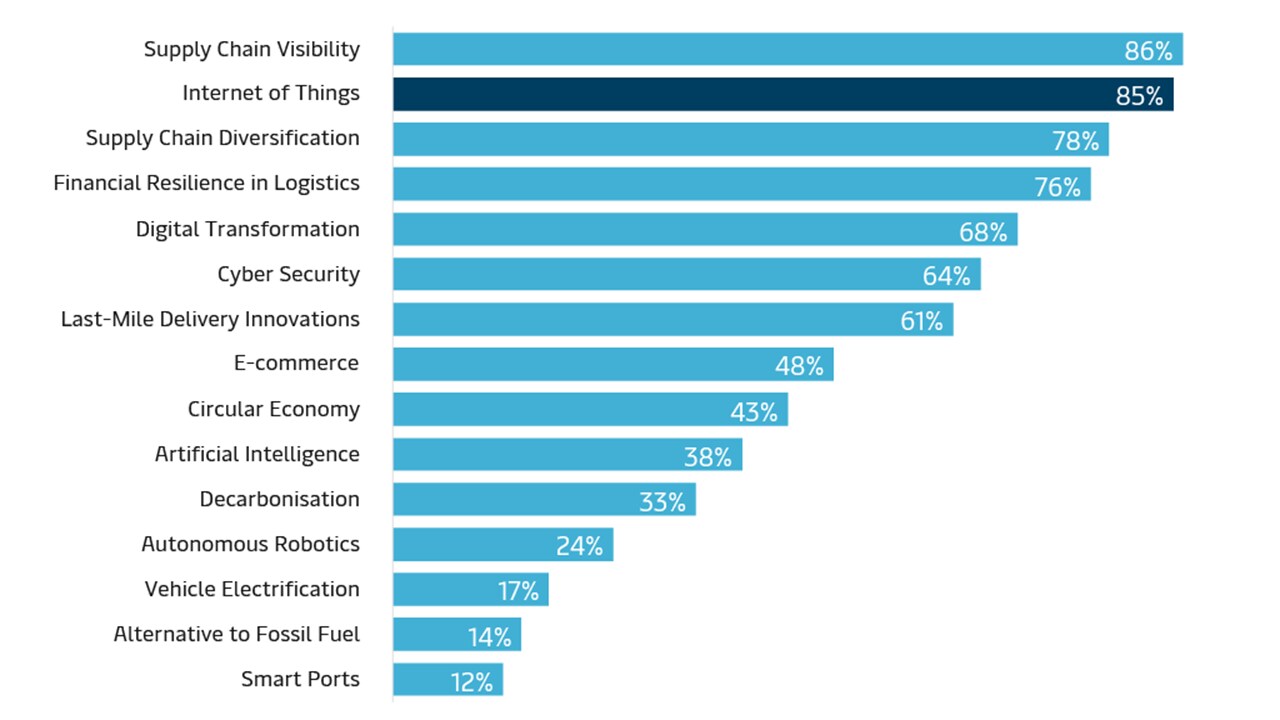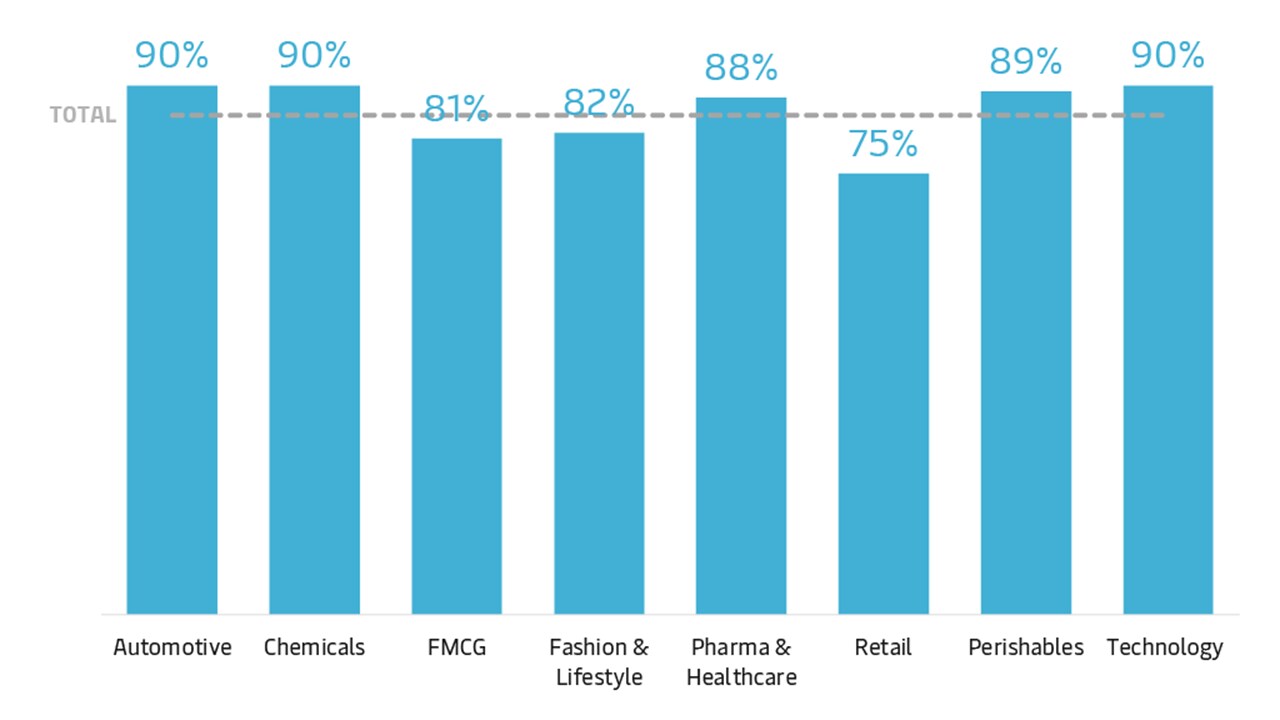
Internet of Things
Real-time tracking, predictive maintenance and inventory management through connected devices such as sensors and asset management.
Theme: Digitalisation
Industry Adaption: ⚫ ⚫ ⚪ ⚪ Early Adopters
Impact: ⚫ ⚫ ⚪ Significant
A 2024 Maersk survey shows that decision makers rank Internet of Things 2nd out of the top 15 trends.
Internet of Things (IoT) technology is transforming logistics by enabling real-time tracking, predictive maintenance, inventory management, and much more. With IoT-enabled sensors, logistics operators can gain transparency across supply chains and optimise delivery routes in real-time. They also enable automated stock monitoring in warehouses and predictive maintenance for trucks, forklifts and logistics equipment. This addresses inefficiencies and unpredictability by optimising processes and improving resilience through predictive analytics. The adoption of IoT-enabled automation in logistics, is expected to lead to performance improvements of between 10% to 20% in the short term and 20% to 40% within two to four years. This transformation enhances efficiency in transportation and warehousing operations.
IoT tools are gaining momentum as an essential industry trend. While still in the early adopter stage, patents and research activity highlight the accelerating pace of adoption. Although around ten startups have entered the field in the last decade, innovation is marked by an extraordinarily high number of patents: Over 15,000 filed between 2019 and 2023, including more than 500 groundbreaking inventions. Academic interest is also strong, with ~5,000 scientific publications. The decline in C-Suite mentions – from 250+ in 2022 to 80+ in 2024 – reflects IoT’s transition from exploration to operational integration.
~10
thereof groundbreaking: 500+
2024: 80+

Explore the Global Logistics Trends of 2025
Dive deep into the Top 10 trends shaping the industry today as well as valuable insights to help you build a more resilient supply chain.
Top 15 Trends
Share of Key Decision Makers, who consider the trend to be relevant for their company’s logistics

Internet of Things – Relevance by Industry

What are the opportunities?
IoT fosters automation, supporting safety in manual labour and increasing productivity. Real-time cloud-based tracking provides actionable insights, allowing swift responses to disruptions and streamlining a brand’s global operations.
What are the challenges?
Challenges for IoT include ensuring data accuracy across fragmented supply chains and mitigating security risks such as unauthorised access. Tamper-alert sensors offer partial solutions to such challenges, but concerns seem to persist.
Sources:
- McKinsey (2023).
- Survey among 500+ global logistics decision makers across various industries, conducted by Statista for Maersk (Q4 2024).
- In-depth interviews with global industry experts, academia, and futurists.
- Unstructured web sources with more than 10,000 search term permutations using AI.
- Curated data from startup databases, patent databases, and analysis tools, as well as Semantic Scholar.



